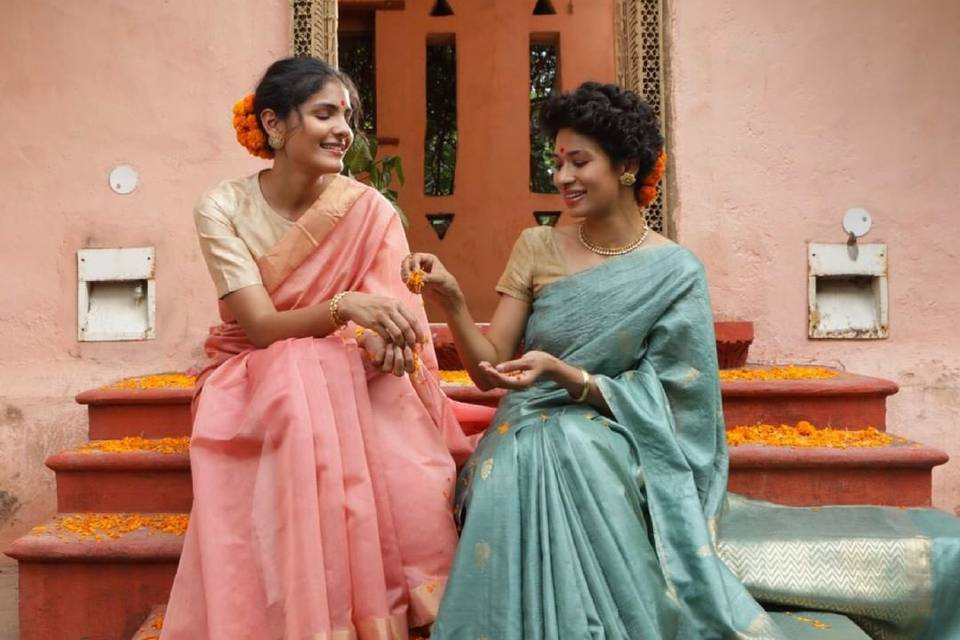
The Fabindia Experience: A Shopper’s Guide To Authentic Indian Style Clothes
India is a nation of diversity where the language, fashion, and food change with every state you cross over to. Billions of people reside in this country made up of hundreds of cultures. Each region has its own fashion preference made up of clothes that are as colourful, elegant, and vibrant as the people wearing them.
India’s traditional fashion is heavily influenced by the climate, social customs, and region that it originates from. Heavy use of vibrant, bold, bright colours is seen along with patterns like bandhani and intricate zari work that is famous worldwide. Accessories are as important as clothes as they complete the outfit and add a touch of personality to the attire.
Although it is impossible to list all the various styles of clothes ones can find in Fabindia, here are some common styles of traditional clothing that people wear all over the country.
For Women
Traditional women’s attire is elegant. Rich, vibrant colours dominate wardrobes. The main aim of Fabindia is to offer styles that add to the grace of the common Indian woman, from meters-long fabric that can be draped in numerous ways to two pieces that include various styles of tops and bottoms. With the heavy influence of western fashion, you can also find several Indo-Western clothing pieces.
-
The Elegant Saree
When describing a saree, nothing can be truer than the phrase ‘six yards of elegance’. A saree is a long piece of fabric that is draped around the body. On Fabindia, the humble saree can be found in various fabrics like linen, silk, and georgette and is usually adorned with colourful prints, embroidery, zari work, sequins, and more.
Every state in India has its own way of draping a saree. Women of all ages wear this beautiful garment, although older women usually wear it regularly. A saree can be challenging to handle for first-timers. Nonetheless, a woman in a saree is a picture of grace, femininity, and sophistication.
-
The Comfy Salwar Suit
A salwar suit, also called salwar-kameez, comprises two pieces. The salwar is a loose pair of pants, and the kameez, also called the kurta, is a long tunic worn on top. A dupatta, or a long scarf, can also be added to complete the outfit.
There are various types of salwar suits women can wear. One is a Patiala suit, a long tunic with side slits and a loose-fitting, puffy salwar that tapers around the ankles. The other is a long kurta with churidar – a slim pair of pants. The bottoms of a salwar suit can also include palazzos or even skirts.
The Fabindia salwar suit is the go-to option for daily, casual wear. You will find a range of salwar suits – light and flowy, meant for everyday wear; heavy with rich embroidery – worn during special occasions.
-
The Festive Lehenga
A lehenga, also called “ghagra choli”, is a fun two-piece that includes the choli or a blouse worn on top; and the lehenga or the skirt flaring out at the bottom. A dupatta is worn along with the lehenga to complete the outfit. The attire brings in fun, young, happy energy that denotes the start of a joyous occasion.
A lehenga is generally worn at festivals or special events such as weddings. Anyone can wear this, from little girls to older women. Fabindia offers various types of lehengas for girls, some arrive with a dupatta, and others consist of a waist-length top and a skirt.
-
The Casual Kurti
A kurta is a longer tunic, usually, calf length or below, often with side slits up to the waist. A kurti, on the other hand, is a shorter top that ends around the mid-thigh. Kurtis are usually worn casually to college or work. They can be paired with linen pants or cotton trousers. For a fun Indo-western outfit, wear a Fabindia kurti with jeans.

For Men
Traditional Indian attire for men includes kurtas that are usually paired with cotton pants, churidars, dhotis, or jeans. Fabindia creates traditional Indian clothes for men that look elegant, rich, and bright.
-
The Comfortable Kurta – Pyjama
For men, the typical Indian attire for most festivals and special occasions would be the comfortable yet vibrant kurta-pyjama. The Fabindia kurta is a long tunic, usually made of cotton or silk, extending up to the knee. It can either be solid or printed and usually has a mandarin collar. The pyjama is a type of loose pants made of cotton or linen. Men can also wear churidars or jeans under the kurta for a western touch.
-
The Classic Dhoti
A dhoti is a long piece of fabric that is wrapped around the waist and legs. It is the male counterpart of a saree, usually made of cotton or silk. Dhotis can be found in various colours, although white is the most commonly worn. The dhoti was the precursor to the pyjama and was worn daily until the advent of the pyjama. Dhoti has several names all over the country and various variations of how to wear it depending on the state and region.
-
The Noble Nehru Jacket
The traditional Indian jacket derives its name from Jawaharlal Nehru, India’s first prime minister, who was famous for wearing them. The Nehru Jacket is a hip-length, sleeveless jacket with a mandarin collar. The jacket is commonly made of cotton, linen, or silk and is worn over a kurta-pyjama. The Fabindia Nehru Jacket elegantly enhances the casual kurta-pyjama to a noble level, increasing the royalty of the attire.

Conclusion
Elegance and sophistication are the two words that come to mind while describing traditional Indian clothing. Diversity is another word that conveys the ever-changing Indian fashion in every region of the country. Traditional clothes that are commonly worn in North India are vastly different from those worn in South India. Even the names and the way of styling or draping them are different. If you wish to participate in this celebration of grace, explore the range of stylish Fabindia clothes and wear the colours of India.




